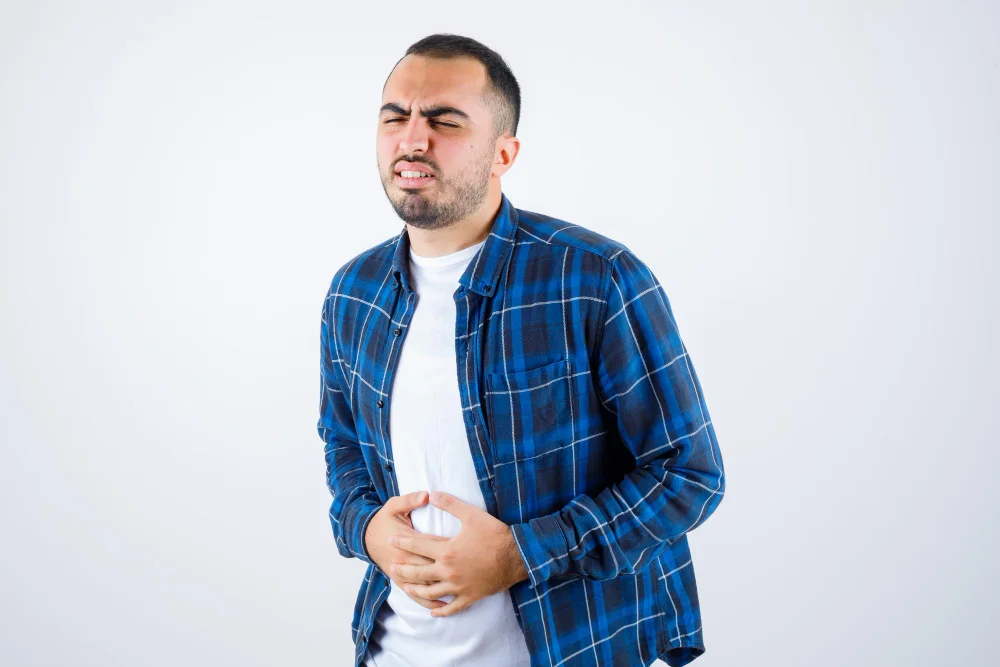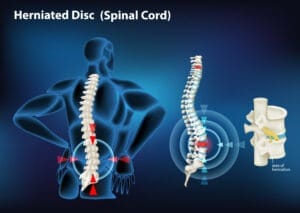Abdominal pain is one of the most common health concerns worldwide. It can range from mild discomfort to severe, sharp pain that interferes with daily life. Almost everyone experiences abdominal pain at some point, and while many cases are harmless, some may signal an underlying condition that needs medical attention.
In this article, we’ll explore the causes, symptoms, and effective treatments for abdominal pain, along with tips on when to see a doctor. By the end, you’ll have a clear understanding of why abdominal pain happens and how to manage it safely.
What is Abdominal Pain?
Abdominal pain refers to discomfort felt anywhere between the chest and pelvic region. People often use the term “stomach ache,” but abdominal pain doesn’t always come from the stomach alone. It can involve other organs such as the liver, gallbladder, pancreas, intestines, or even muscles and tissues in the abdominal wall.
The pain may feel:
- Sharp or stabbing – sudden and intense.
- Dull or crampy – common with indigestion or menstrual cramps.
- Burning or aching – often linked to acid reflux or ulcers.
- Localized or generalized – either in one spot or spread across the abdomen.
Because so many organs are located in the abdominal cavity, the causes of abdominal pain can vary widely, making diagnosis important.
How Common is Abdominal Pain?
Abdominal pain accounts for nearly 5% of all emergency room visits worldwide. While the majority of cases are not serious—such as indigestion, bloating, or constipation—persistent or severe abdominal pain can indicate conditions like appendicitis, gallstones, or ulcers that require urgent treatment.
What are the Types of Abdominal Pain?
Doctors often classify abdominal pain based on its location and duration, which makes it easier to identify the underlying cause. Since the abdomen houses many vital organs, pinpointing the exact type of pain is the first step toward the right diagnosis and treatment.
Upper Abdominal Pain
- Right side: Pain in the upper right abdomen is commonly linked to gallstones, liver problems such as hepatitis or fatty liver, and sometimes kidney infections or stones.
- Left side: Discomfort in the upper left side may be due to gastritis (stomach inflammation), pancreatitis, or problems with the spleen. People may feel burning, sharp, or constant dull pain depending on the condition.
Lower Abdominal Pain
- Right side: The most common cause here is appendicitis, which usually starts with dull pain near the navel and then shifts to sharp pain in the lower right abdomen. This often requires urgent medical attention.
- Left side: Pain in the lower left abdomen can be linked to diverticulitis, constipation, or gynecological problems in women such as ovarian cysts or endometriosis.
Generalized Pain
Sometimes, the pain is spread across the entire abdomen rather than being in one specific spot. This type of pain may be due to stomach infections, food poisoning, indigestion, or irritable bowel syndrome (IBS). Generalized pain can range from mild cramping to severe discomfort.
Chronic vs. Acute Pain
- Acute abdominal pain: Comes on suddenly and is often severe. It may signal emergencies like appendicitis, kidney stones, or gallbladder attacks.
- Chronic abdominal pain: Persists for weeks or months and is usually linked to long-term conditions such as ulcers, gallbladder disease, or IBS.
What are the Common Causes of Abdominal Pain?
Abdominal pain can arise from many different reasons—some minor and temporary, others more serious and requiring medical attention. Below are the most common categories of causes:
1. Digestive Issues
- Indigestion: Eating too much, too quickly or consuming spicy and oily foods can irritate the stomach lining. This often causes a burning sensation, discomfort, or heaviness after meals.
- Gas and bloating: Excessive gas stretches the intestines leading to sharp or crampy pain. It may also cause a feeling of fullness or pressure in the stomach.
- Constipation or diarrhea: Difficulty passing stool or frequent loose stools can both cause abdominal discomfort. These are often temporary but uncomfortable.
- Food poisoning: Eating contaminated food can trigger sudden cramps, nausea, vomiting and diarrhea usually lasting 24–48 hours.
2. Infections and Inflammation
- Gastroenteritis (stomach flu): A viral or bacterial infection of the intestines that causes abdominal cramps, diarrhea, and vomiting.
- Peptic ulcers: Open sores in the stomach or small intestine lining that lead to burning or gnawing abdominal pain often worse on an empty stomach.
- Urinary tract infection (UTI): Infections in the bladder or urinary tract can cause dull lower abdominal pain along with a frequent urge to urinate.
- Hepatitis or gallbladder inflammation (cholecystitis): Both conditions affect the upper right side of the abdomen often causing sharp or persistent pain.
3. Reproductive System Causes (in Women)
- Menstrual cramps: A very common reason for lower abdominal pain usually occurring before or during periods.
- Ovarian cysts: These fluid-filled sacs can form in the ovaries and cause sudden, sharp or localized pain.
- Endometriosis: A condition where tissue similar to the lining of the uterus grows outside it, often leading to chronic lower abdominal or pelvic pain.
4. Serious Conditions
- Appendicitis: Severe pain that typically starts near the belly button and shifts to the lower right abdomen. This is a medical emergency requiring surgery.
- Kidney stones: Small hard deposits that cause sharp, radiating pain in the lower abdomen and back, sometimes accompanied by blood in urine.
- Gallstones: Stones in the gallbladder that block bile ducts, leading to sudden and intense right upper abdominal pain.
- Intestinal obstruction: A blockage that prevents food and fluids from passing through the intestines, causing severe cramping, bloating, and vomiting.
What are the Symptoms of Abdominal Pain?
Abdominal pain is not always the same for everyone. Its nature, intensity, and associated symptoms can provide important clues about what might be happening inside the body. Paying attention to these secondary symptoms can help in identifying whether the pain is a minor digestive issue or a sign of something more serious.
Common accompanying symptoms include:
- Nausea and vomiting: Often linked with infections, food poisoning, or stomach ulcers.
- Bloating and gas: Suggests indigestion, irritable bowel syndrome (IBS), or excessive gas buildup.
- Fever or chills: Indicates an underlying infection, such as gastroenteritis, appendicitis or a urinary tract infection.
- Blood in stools or urine: A red flag for ulcers, gastrointestinal bleeding, kidney stones, or urinary infections.
- Yellowing of eyes/skin (jaundice): Suggests liver or gallbladder disease, such as hepatitis or bile duct blockage.
- Pain radiating to the chest, back, or shoulders: May indicate gallstones, pancreatitis, or even a heart-related condition.
Examples for better clarity:
- Abdominal pain with fever and vomiting may point to appendicitis or stomach infection.
- Abdominal pain with jaundice often signals liver problems or gallbladder disease.
- Abdominal pain with blood in stool may suggest ulcers or intestinal bleeding that requires urgent care.
When to See a Doctor for Abdominal Pain
Mild abdominal pain is common and often goes away with rest, hydration, or simple home remedies. However, not all pain should be ignored. Sometimes, abdominal pain can be a warning sign of a more serious medical condition that needs immediate attention.
Seek medical help right away if you experience:
- Severe, sudden pain: Especially if it comes on suddenly and feels sharp or unbearable. This may signal appendicitis, gallstones, or a perforated ulcer.
- Persistent pain lasting more than a few days: Ongoing discomfort can point to conditions like gastritis, ulcers, or irritable bowel syndrome (IBS).
- Blood in vomit or stool: Vomiting blood or passing black, tarry stools may indicate internal bleeding.
- Inability to pass gas or stool: Could mean intestinal obstruction, which requires urgent treatment.
- Pain after injury: Abdominal trauma, such as after a fall or accident, may cause internal bleeding.
- Pain during pregnancy: Any abdominal pain in pregnant women should be evaluated immediately to rule out complications.
Important note: Never ignore abdominal pain that is worsening, spreading, or interfering with your daily life. It is always better to get checked by a healthcare professional than risk delaying treatment for a potentially serious condition.
Diagnosis of Abdominal Pain
Since abdominal pain can arise from many different causes, doctors usually take a systematic approach to diagnosis. The goal is to identify the exact source of pain so that treatment can be effective and targeted.
1. Medical history
The doctor will first ask detailed questions about your pain:
- Where exactly is the pain located?
- Is it sharp, dull, burning, or cramp-like?
- How long has it been present?
- Does it worsen after eating, movement or at night?
- Are there accompanying symptoms like nausea, vomiting, fever or jaundice?
This history helps narrow down possible causes. For example, pain in the upper right abdomen after fatty meals may suggest gallstones while pain in the lower right abdomen with fever may indicate appendicitis.
2. Physical examination
Doctors then gently press on different areas of the abdomen to check for:
- Tenderness or swelling
- Abnormal masses
- Muscle rigidity (a possible sign of peritonitis)
- Pain that worsens on release of pressure (rebound tenderness, seen in appendicitis)
3. Laboratory tests
- Blood tests: To detect infections, liver disease, pancreatitis or anemia.
- Urine tests: To rule out urinary tract infections or kidney stones.
- Stool tests: To check for blood, parasites, or signs of digestive disorders.
4. Imaging tests
When initial tests are not enough imaging helps provide a clearer picture:
- Ultrasound: Commonly used for gallstones, kidney stones or gynecological problems.
- X-ray: Can detect bowel obstructions or perforations.
- CT scan or MRI: Offers a more detailed look at internal organs and helps identify tumors, infections, or injuries.
5. Endoscopy or colonoscopy
If stomach ulcers, inflammation, or intestinal issues are suspected, a small camera inserted through the mouth or rectum allows doctors to directly examine the digestive tract.
What are the Treatments for Abdominal Pain?
Abdominal pain can arise from various causes, but its treatment depends entirely on the underlying condition. While some cases improve with rest and simple remedies others may require medications or even surgery. Below are the main approaches:
1. Home Remedies for Mild Pain
For occasional discomfort linked to indigestion, bloating, or mild constipation, natural remedies are often the first line of relief:
- Hydration – Drinking enough water supports digestion, prevents constipation, and helps flush out toxins from the body.
- Diet changes – Avoid greasy, fried, or spicy foods, which can worsen pain. Instead, choose bland foods like bananas, rice, applesauce, and toast (the BRAT diet) that are gentle on the stomach.
- Heat therapy – Applying a warm compress or heating pad relaxes abdominal muscles, easing cramps and spasms.
- Herbal aids – Natural options like ginger tea for nausea, peppermint tea for bloating, and chamomile tea for indigestion can provide soothing relief.
When to try: Home remedies are suitable if your pain is mild, infrequent, and not associated with alarming symptoms like fever, blood in stool, or severe vomiting.
2. Medications
When abdominal pain is caused by infections, inflammation, or chronic digestive issues, doctors may prescribe medications such as:
- Antacids and acid reducers – Useful for conditions like GERD, acid reflux, or gastritis, as they reduce stomach acid and provide quick relief.
- Antibiotics – Needed if a bacterial infection (such as H. pylori in peptic ulcers or certain foodborne infections) is detected.
- Antispasmodics – bThese relax the intestinal muscles and help patients with Irritable Bowel Syndrome (IBS) or cramping disorders.
- Pain relievers – Doctors may prescribe acetaminophen or other safe options, but NSAIDs like ibuprofen are avoided in ulcer patients since they can worsen stomach lining damage.
3. Medical Procedures
For severe or life-threatening conditions medical interventions become necessary:
- Surgery – Emergency surgery is often required for appendicitis, gallstones, hernias, or intestinal obstruction.
- Endoscopic treatments – Doctors can use endoscopy to remove ulcers, treat bleeding lesions, or manage blockages inside the digestive tract.
- Kidney stone removal – If stones are too large to pass naturally, procedures like lithotripsy (breaking stones using sound waves) or minimally invasive surgery may be performed.
Lifestyle Tips to Prevent Abdominal Pain
- Eat smaller, frequent meals instead of heavy portions.
- Stay active to promote healthy digestion.
- Limit alcohol and caffeine, which can irritate the stomach lining.
- Practice stress management, since anxiety often worsens abdominal discomfort.
- Maintain a diet rich in fiber to help prevent constipation.
Prevention is not always possible, but healthy lifestyle habits can significantly reduce the frequency of abdominal pain episodes.
Also Read: Easy Tips to Stay Healthy
Abdominal Pain in Children vs. Adults
Children often experience abdominal pain from common causes like gas, constipation, or mild stomach infections. However, conditions such as appendicitis and intussusception require urgent care.
Adults, on the other hand, may experience abdominal pain due to long-term issues like gallstones, ulcers or chronic diseases such as Crohn’s disease.
Understanding age-specific causes ensures timely medical attention.
Abdominal Pain: Myths vs. Facts
Many people misunderstand abdominal pain, which can delay proper treatment. Let’s clear up some common myths with the real facts:
Myth: All abdominal pain is due to indigestion.
Fact: While indigestion and gas are common causes, abdominal pain can also point to serious conditions like appendicitis, gallstones, kidney stones, ulcers, or even cancers.
Myth: If the pain is mild, it can’t be serious.
Fact: The intensity of pain doesn’t always match the severity of the condition. For example, internal bleeding, early appendicitis, or gallbladder disease may sometimes begin with mild or dull pain before worsening suddenly.
Myth: Home remedies are always enough.
Fact: While remedies like ginger tea, hydration, or rest may help with occasional mild abdominal pain, they are not a cure for underlying medical problems. If the pain is frequent, severe, or accompanied by warning signs such as fever, vomiting blood, or yellowing of the eyes, professional medical care is essential.
Key Takeaway
Abdominal pain is a common health issue that can range from mild indigestion to severe emergencies like appendicitis or gallstones. The key is recognizing the causes, symptoms, and effective treatments for abdominal pain so you can act quickly and appropriately.
If you’re experiencing unexplained or persistent abdominal pain, don’t ignore it. Early diagnosis and treatment can prevent complications and provide long-lasting relief.
Frequently Asked Questions
1. What are 5 causes of abdominal pain?
The top five causes of abdominal pain are indigestion and gas, constipation, food poisoning, appendicitis, and gallstones or kidney stones.
2. How to reduce abdominal pain?
You can reduce abdominal pain by staying hydrated, eating light foods, using a warm compress, or sipping herbal teas like ginger or peppermint. See a doctor if pain persists.
3. When to worry about abdominal pain?
Worry if abdominal pain is severe, sudden, or ongoing, especially with fever, vomiting, blood in stool, or yellowing of the skin. These may signal serious illness.
4. What kind of abdominal pain is serious?
Serious abdominal pain is sharp, sudden, or worsening. Pain with fever, swelling, or during pregnancy should be treated as urgent.
5. What is the most common reason for lower abdominal pain?
The most common reason for lower abdominal pain is constipation, gas, or menstrual cramps. In some cases, it may indicate appendicitis or urinary infections.




